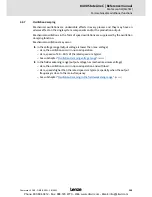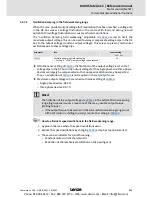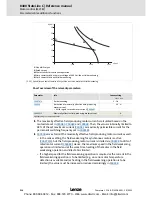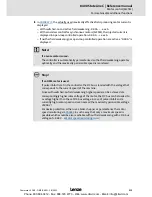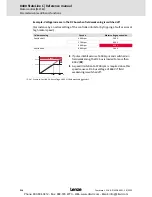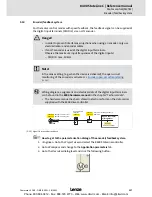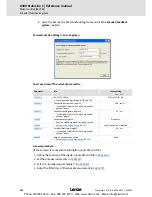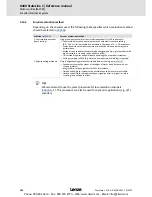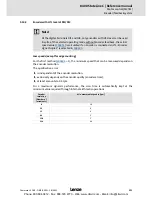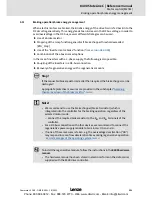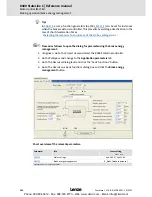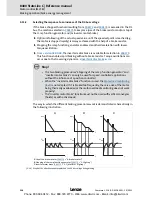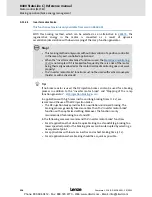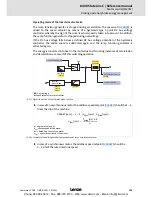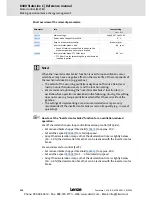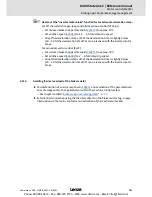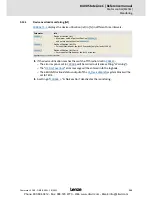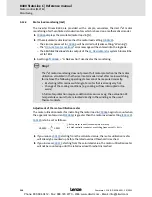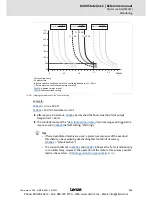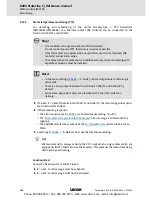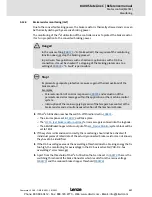
Firmware
≤
11.00 - DMS 8.0 EN - 10/2011
L
223
8400 StateLine C | Reference manual
Motor control (MCTRL)
Braking operation/brake energy management
5.11
Braking operation/brake energy management
When electric motors are braked, the kinetic energy of the drive train is fed back into the
DC circuit regeneratively. This energy leads to an increase in the DC bus voltage. In order to
avoid overvoltage in the DC bus, several different strategies can be used:
Use of a brake resistor
Stopping of the ramp function generator if brake chopper threshold exceeded
(RFG_Stop)
Use of the "Inverter motor brake" function
(from version 04.00.00)
Combination of the above named options
In the case of inverters with a 3-phase supply, the following is also possible:
Coupling of the inverters in a DC-bus connection
Recovery of regenerative energy with a regenerative module
Stop!
If the connected brake resistor is smaller than required, the brake chopper can be
destroyed!
Appropriate protective measures are provided in the subchapter "
Avoiding
thermal overload of the brake resistor
".
(
231)
Note!
• We recommend to use the brake chopper (brake transistor) which is
integrated into the controller for the braking operation, regardless of the
selected motor mode.
– Connect the required brake resistor to the R
B1
and R
B2
terminals of the
controller.
• For a DC-bus connection with other devices, we recommend to connect the
regenerative power supply module to terUG and –UG.
• If none of these measures is taken, e.g. the overvoltage deactivation ("OU")
may respond in case of low deceleration times during regenerative operation.
Error messages of the operating system
(
401)
To install the regenerative module, follow the instructions in the
8400 hardware
manual
.
• The hardware manual has been stored in electronic form on the data carrier
supplied with the 8400 drive controller.
Phone: 800.894.0412 - Fax: 888.723.4773 - Web: www.clrwtr.com - Email: [email protected]

